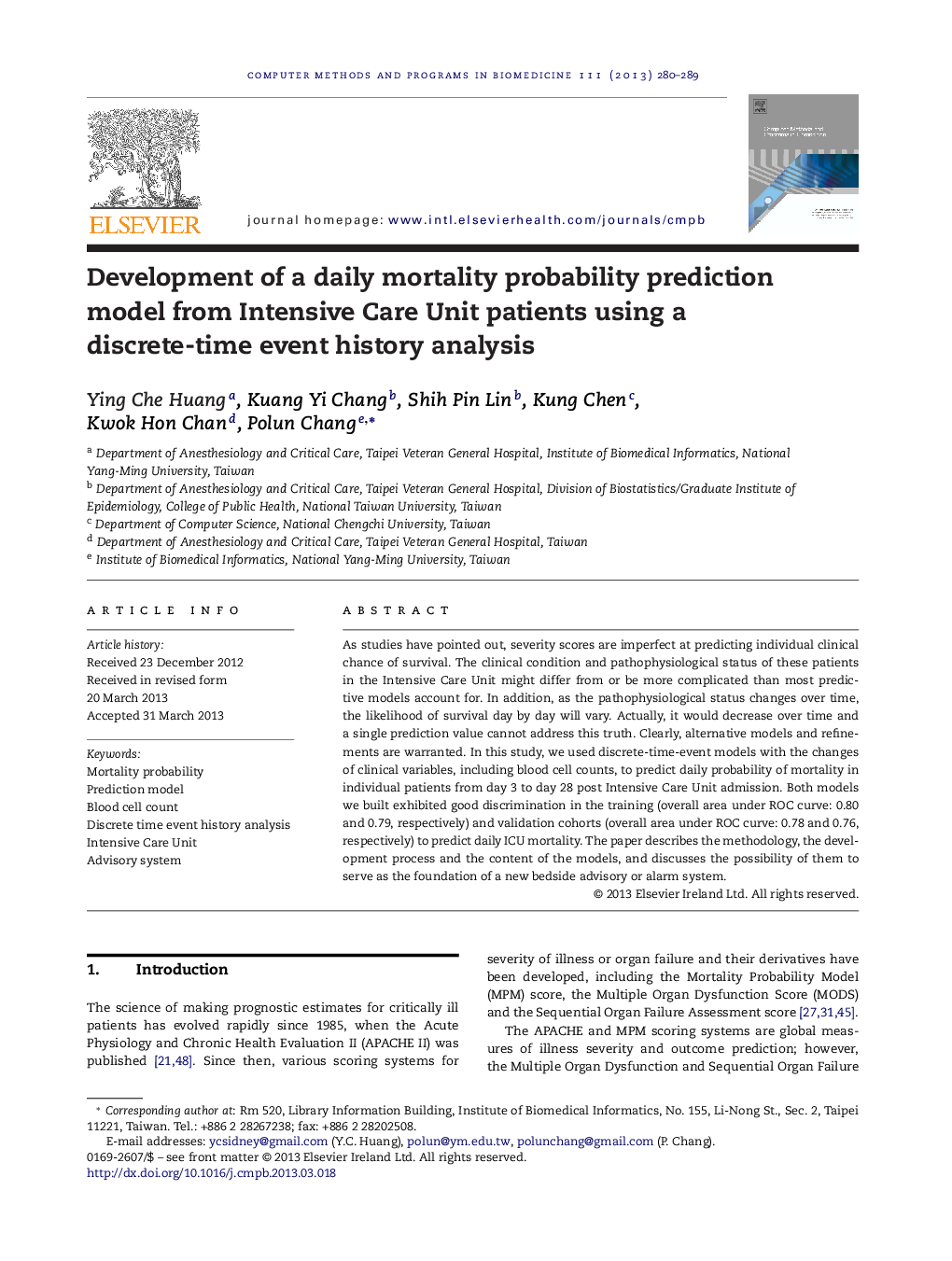| Article ID | Journal | Published Year | Pages | File Type |
|---|---|---|---|---|
| 466555 | Computer Methods and Programs in Biomedicine | 2013 | 10 Pages |
As studies have pointed out, severity scores are imperfect at predicting individual clinical chance of survival. The clinical condition and pathophysiological status of these patients in the Intensive Care Unit might differ from or be more complicated than most predictive models account for. In addition, as the pathophysiological status changes over time, the likelihood of survival day by day will vary. Actually, it would decrease over time and a single prediction value cannot address this truth. Clearly, alternative models and refinements are warranted. In this study, we used discrete-time-event models with the changes of clinical variables, including blood cell counts, to predict daily probability of mortality in individual patients from day 3 to day 28 post Intensive Care Unit admission. Both models we built exhibited good discrimination in the training (overall area under ROC curve: 0.80 and 0.79, respectively) and validation cohorts (overall area under ROC curve: 0.78 and 0.76, respectively) to predict daily ICU mortality. The paper describes the methodology, the development process and the content of the models, and discusses the possibility of them to serve as the foundation of a new bedside advisory or alarm system.
